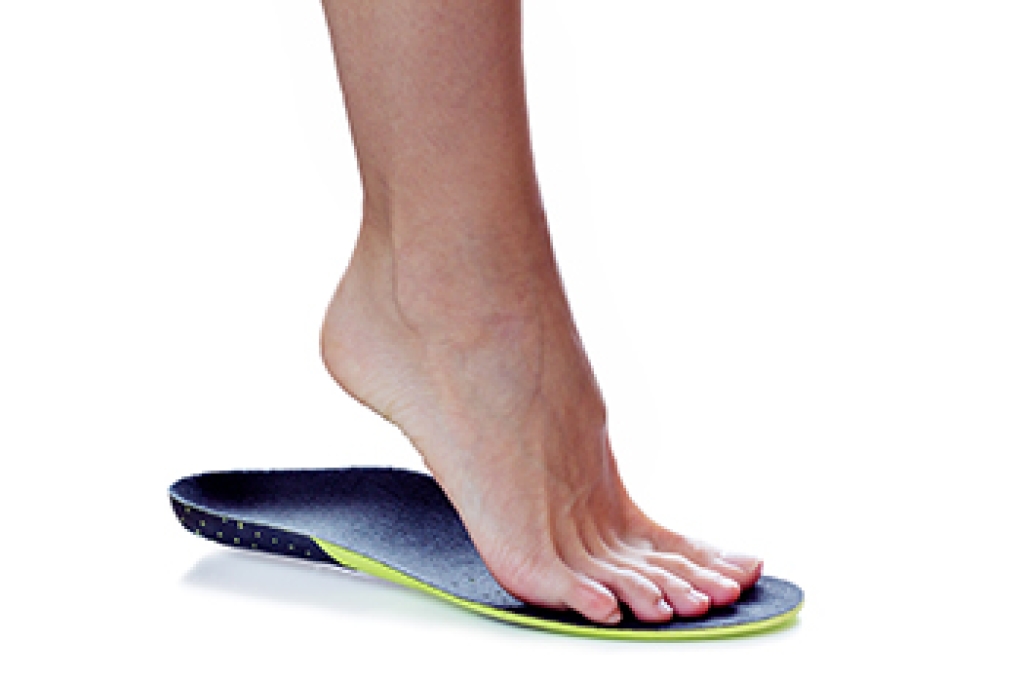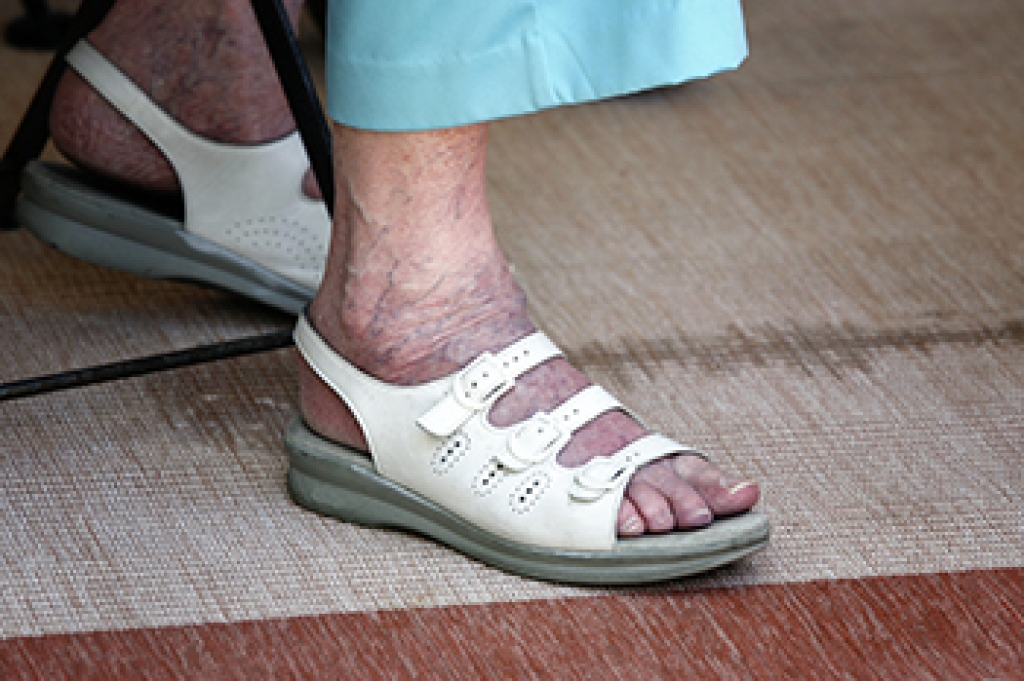Blog
Types of Orthotics

Orthotics are tailor-made devices designed to tackle diverse foot issues. There are three primary types of orthotics, each with unique attributes. Rigid orthotics, crafted from sturdy materials, prioritize stability, minimizing movements that cause discomfort. Conversely, soft orthotics are made of pliable materials, focusing on cushioning and enhanced comfort. Semi-rigid orthotics strike a balance, being fashioned from a blend of both rigid and soft materials, delivering both support and cushioning. The purposes of custom-made orthotics range from simple cushioning and support to advanced shock absorption and boosting athletic prowess. To ascertain the most suitable orthotic type for specific requirements, it is suggested that you consult a podiatrist who can customize orthotics that will best meet your needs.
Custom orthotics play an important role in preventing and treating foot and ankle injuries by providing personalized support that aligns with the unique structure of each foot. These specially designed devices help correct biomechanical imbalances, reduce pressure on sensitive areas, and improve stability during movement. When the feet are properly supported, the risk of developing conditions such as plantar fasciitis, Achilles tendinitis, and ankle sprains can be significantly reduced. Custom orthotics also help relieve discomfort caused by having flat feet, high arches, or uneven leg length, which may contribute to recurring injuries or pain.
Foot and ankle injuries can develop gradually from repetitive strain or occur suddenly during physical activity. Without proper treatment, these injuries can affect mobility and overall quality of life. Orthotics work to redistribute weight evenly across the foot, allowing joints and muscles to function more efficiently. This not only supports recovery from injury but can also prevent future problems by promoting better posture and alignment throughout the lower body.
Unlike over-the-counter inserts, custom orthotics are designed based on a detailed evaluation of each patient’s foot structure, gait, and medical needs. Podiatrists use advanced imaging and diagnostic tools to create orthotics that fit precisely and provide targeted correction. Whether used in everyday footwear or athletic shoes, custom orthotics can improve comfort, enhance performance, and support long-term foot health.
If you are experiencing foot or ankle pain or have sustained an injury that has not improved with rest, it is suggested that you schedule an appointment with a podiatrist. Call our office for more information or to make an appointment.
If you have any questions, please feel free to contact our office located in Wesley Chapel, FL .
Preventing Foot Problems in Elderly People

As people age, maintaining balance and mobility becomes more difficult, increasing the risk of falls. Decreased muscle strength, joint stiffness, vision changes, and reduced nerve sensitivity can all lead to instability. Foot pain, bunions, hammertoes, and poorly fitting shoes may further affect balance and gait. Some medications and circulation problems can also cause dizziness or weakness. Regular foot care is essential for stability and comfort. A podiatrist can assess foot health, gait, correct biomechanical issues, and recommend custom orthotics or supportive footwear. It is suggested that older adults who notice changes in balance or foot comfort schedule a podiatric exam to prevent falls and stay active safely.
Proper foot care is something many older adults forget to consider. If you have any concerns about your feet and ankles, contact one of our podiatrists from New Tampa Foot & Ankle. Our doctors can provide the care you need to keep you pain-free and on your feet.
The Elderly and Their Feet
As we age we start to notice many changes in our body, but the elder population may not notice them right away. Medical conditions may prevent the elderly to take notice of their foot health right away. Poor vision is a lead contributor to not taking action for the elderly.
Common Conditions
- Neuropathy – can reduce feeling in the feet and can hide many life-threatening medical conditions.
- Reduced flexibility – prevents the ability of proper toenail trimming, and foot cleaning. If left untreated, it may lead to further medical issues.
- Foot sores – amongst the older population can be serious before they are discovered. Some of the problematic conditions they may face are:
- Gouging toenails affecting nearby toe
- Shoes that don’t fit properly
- Pressure sores
- Loss of circulation in legs & feet
- Edema & swelling of feet and ankles
Susceptible Infections
Diabetes and poor circulation can cause general loss of sensitivity over the years, turning a simple cut into a serious issue.
If you have any questions, please feel free to contact our office located in Wesley Chapel, FL . We offer the newest diagnostic and treatment technologies for all your foot care needs.
Types of Hammertoe Surgery

Hammertoe is a deformity where a toe bends abnormally at the middle joint, often caused by muscle imbalance, tight shoes, or injury. When conservative treatments fail, hammertoe surgery can help restore alignment and relieve pain. The procedure may involve tendon transfer to balance toe movement, joint resection to remove part of the bone, or fusion to permanently straighten the joint. Recovery typically includes rest, proper footwear, and a gradual return to activity. A podiatrist can evaluate your condition, explain surgical options, and guide you through recovery for the best outcome. If you have this condition, it is suggested that you consult a podiatrist to discuss if surgical options are right for you.
Foot surgery is sometimes necessary to treat a foot ailment. To learn more, contact one of our podiatrists of New Tampa Foot & Ankle. Our doctors will assist you with all of your foot and ankle needs.
When Is Surgery Necessary?
Foot and ankle surgery is generally reserved for cases in which less invasive, conservative procedures have failed to alleviate the problem. Some of the cases in which surgery may be necessary include:
- Removing foot deformities like bunions and bone spurs
- Severe arthritis that has caused bone issues
- Cosmetic reconstruction
What Types of Surgery Are There?
The type of surgery you receive will depend on the nature of the problem you have. Some of the possible surgeries include:
- Bunionectomy for painful bunions
- Surgical fusion for realignment of bones
- Neuropathy decompression surgery to treat nerve damage
Benefits of Surgery
Although surgery is usually a last resort, it can provide more complete pain relief compared to non-surgical methods and may allow you to finally resume full activity.
Surgical techniques have also become increasingly sophisticated. Techniques like endoscopic surgery allow for smaller incisions and faster recovery times.
If you have any questions, please feel free to contact our office located in Wesley Chapel, FL . We offer the newest diagnostic and treatment technologies for all your foot care needs.


